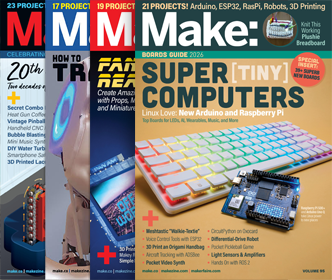Yarn & Quilled Paper Place Card
By Ann Martin
Here’s a place card design that’s quick and easy enough to make a large quantity in a short amount of time, assembly-line style. They would look pretty at a bridal shower luncheon or could even grace your Thanksgiving table.
The flowers were made with colorful 2-ply yarn I’d been saving in my sewing box for ages, leftover from a crewelwork pillow kit. I love it when I finally find a use for extra bits that were just too nice to throw away.
A few strips of quilling paper were rolled and folded to make the flower centers and leaves. If you don’t have quilling paper, you can easily cut your own strips with a paper trimmer. Just use any paper that’s similar in weight to standard computer paper. If you need to join two strips to make a longer one, tear the strip ends before applying a small amount of glue to each, overlapping the ends slightly. The torn edges will blend better than straight cuts and the join spot will barely be noticeable.
Materials
Cardstock apricot
Crewel yarn deep blue, light blue, orange, 2-ply
Quilling paper 1/8″ (standard width) brown, lime green
Quilling tool
Ruler
Scissors
Tweezers
Glue
Plastic lid
Styrofoam tray
Glass-head straight pins
Paper cutter
Address label adhesive-backed
Decorative edge scissors scallop
Gel pen orange
Directions
Step 1: Score and fold a 4″×8″ piece of cardstock to make a 4″ square tent card.
Step 2: Make 3 flowers of varied widths and colors.
Yarn Lengths: 7/8″ flower: 12″, 1¼” flower: 17″, 1½” flower: 22″.
Wrap a length of yarn around your fingertip. Hide the end by gluing it against the underside of the coiled yarn.
Step 3a: Make the flower center by inserting one end of a brown quilling strip into the slot of a quilling tool. Turn the tool handle to roll the paper into a tight coil.
Strip Lengths: Small flower center: 10″, medium flower center: 14″, large flower center: 18″.
Step 3b: Put a dab of glue on something disposable, such as a plastic container lid. Use the tip of a straight pin to pick up a very small amount of glue — it doesn’t take much! Apply the glue to the strip end and hold it in place for the moment or two it takes to dry. I like to use any clear glue that’s suitable for paper.
Step 4: Press one side of the tight coil against the rounded end of the slotted tool, or just use a fingertip to create a small dome. Apply glue inside the dome to preserve its rounded shape.
Glue a domed coil in the center of each flower.
Step 5a: Make 5 lime green leaves of various sizes by using a folding technique that’s called alternate side looping. Begin by making a fold at one end of a quilling strip. The fold should be as tall as you would like the finished leaf to be. My tallest leaf is 1″ and shortest is ½”.
Step 5b: Next, continue using the same strip without cutting it, and make a loop to the left of the fold that isn’t quite as tall as the fold.
Step 6a: Then make a second loop, this one to the right of the fold.
Step 6b: Continue to make pairs of loops of descending sizes, as many pairs as desired. As an example, I made the shortest leaves with 2 pairs of loops and the tallest leaf has 4 pairs.
Step 7a: Encircle all of the loops with the same continuous strip to create a collar. Trim the excess strip at the bottom of the leaf and glue the end in place.
Step 7b: Pinch the top of the collar to create a sharp point at the leaf tip.
Step 8: Make 2 groupings of various leaf sizes: one with 2 leaves, the other with 3. For the most natural look, use glass head pins inserted in an overturned styrofoam tray from the grocery store to position and angle one or two of the leaves in each group. Apply the glue first, and while it’s still damp, position the leaves on the pinheads. Set aside while the glue dries.
Step 9: Trim the width of an address label (with backing still on) to measure 2½” and then cut each corner with scallop-edge scissors. Write the name and table number on the label. Peel off the backing and apply the label to the lower center of the card.
Step 10: Arrange the flowers and leaves as desired and glue them to the upper left corner of the place card.
About the Author:
Ann Martin of all things paper is a quilling enthusiast who loves introducing the craft to others. She teaches, designs projects for books and magazines, and is especially hooked on making paper filigree jewelry.
ADVERTISEMENT





















